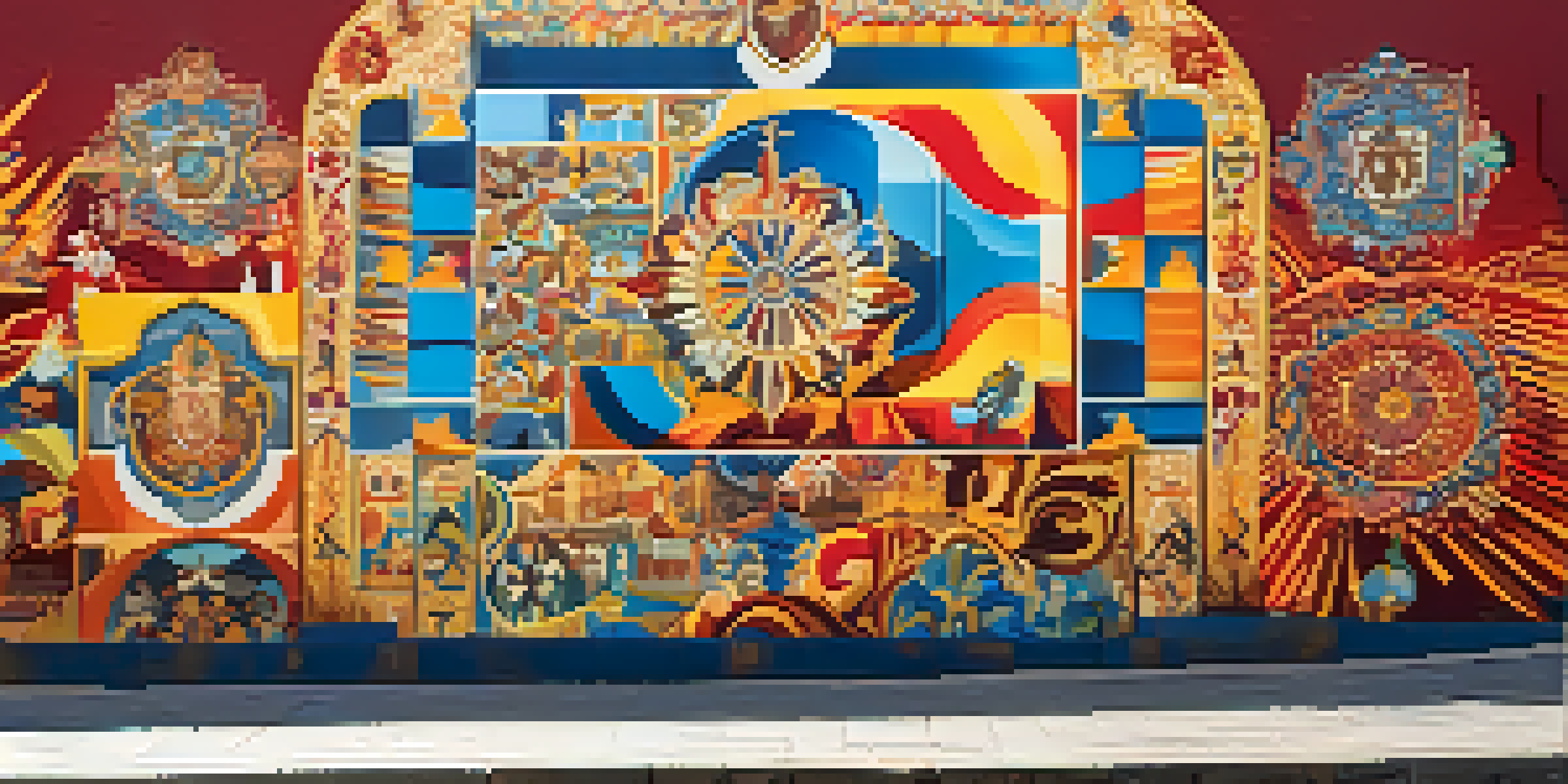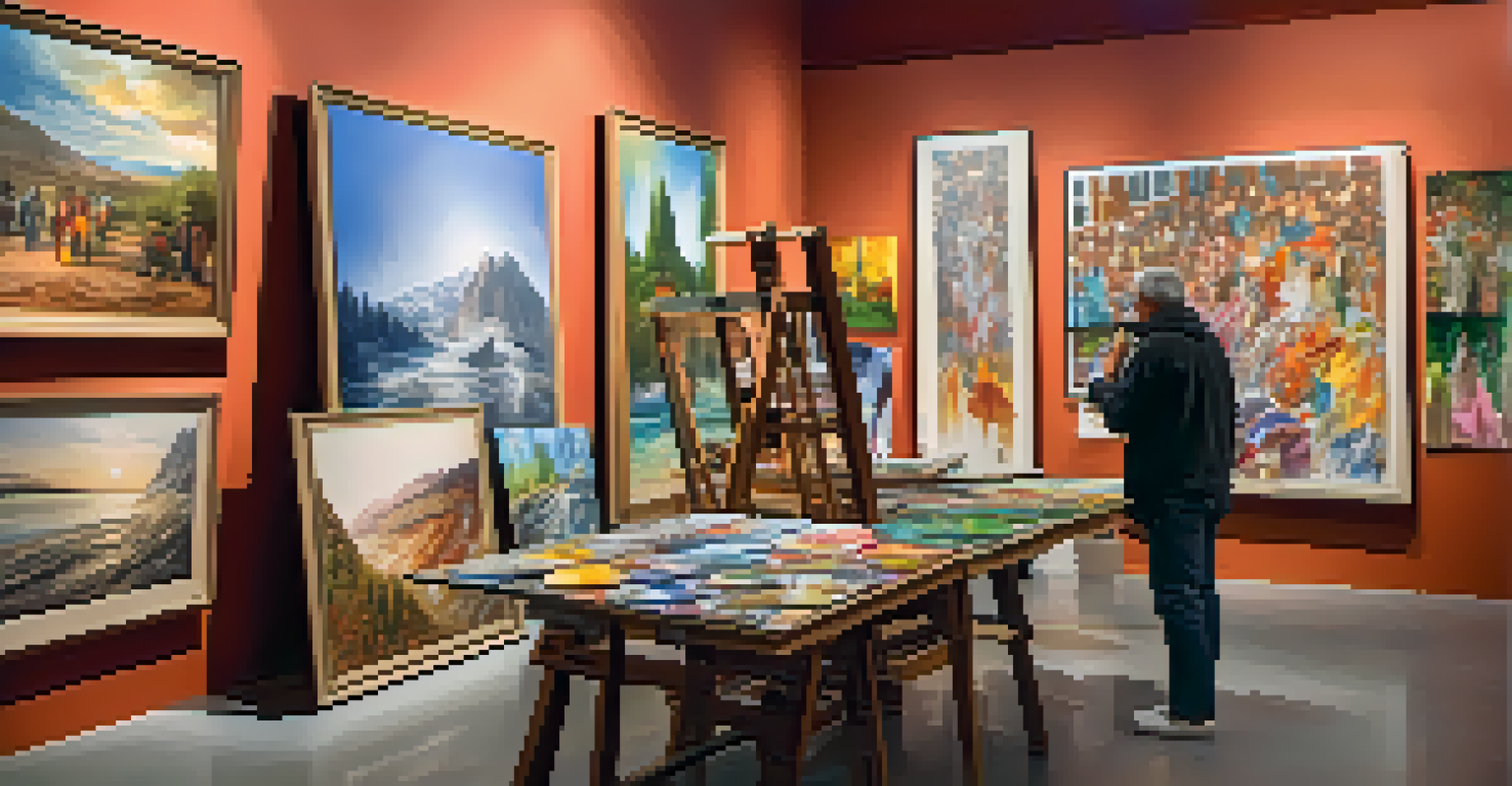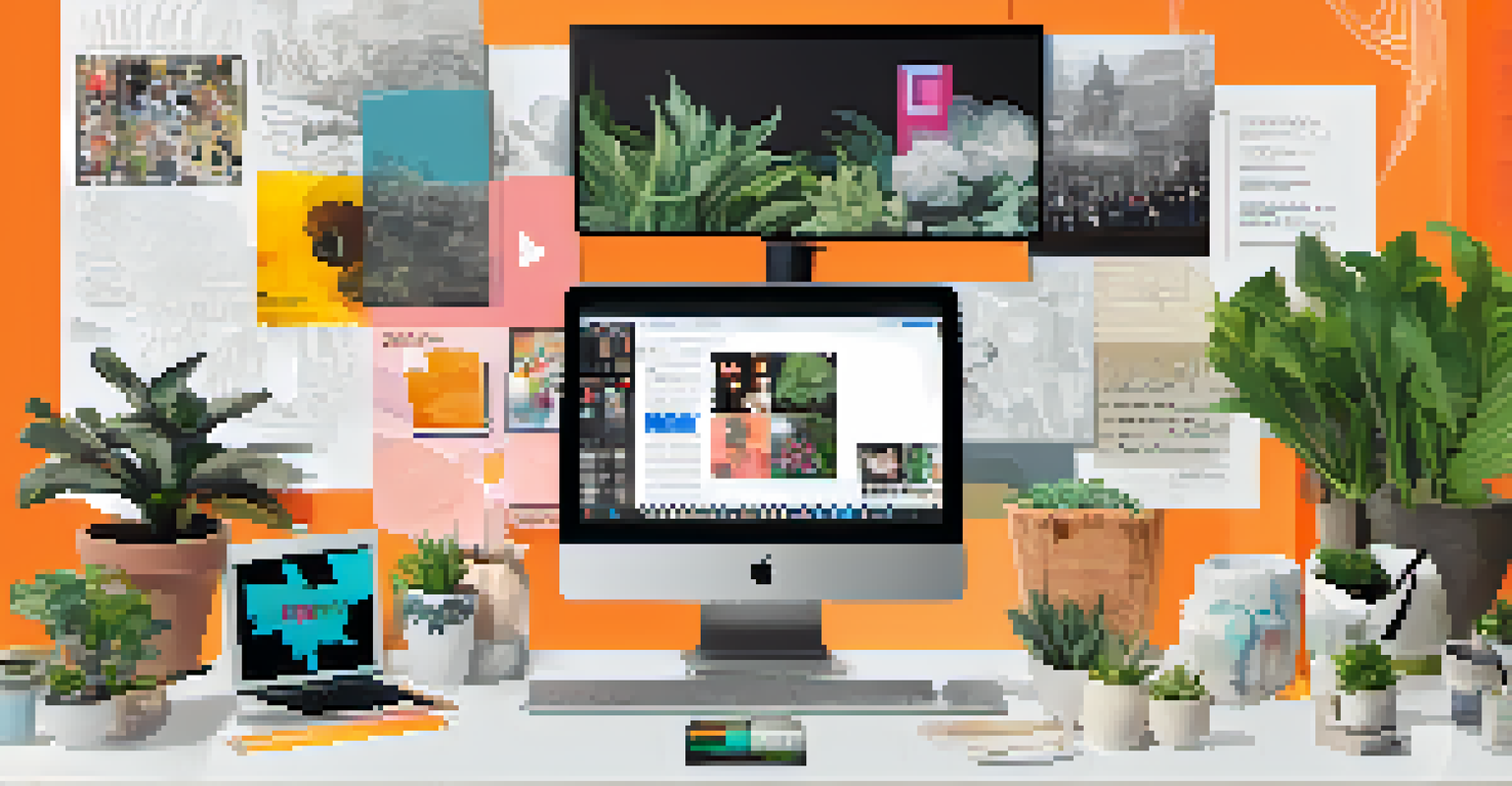Analyzing the Relationship Between Art and Politics in Spain

The Historical Context of Art and Politics in Spain
Spain has a rich tapestry of history where art and politics intertwine. From the time of the Spanish Civil War to the modern democratic era, artists have often used their work to express political sentiments. This connection can be seen in the powerful murals and propaganda posters that emerged during times of conflict.
Art is a weapon in the struggle for freedom.
In particular, the 20th century saw artists like Pablo Picasso and Francisco Goya using their art as a form of social commentary. Their masterpieces often reflect the struggles and injustices experienced by the Spanish people, revealing how deeply rooted the relationship between art and politics is in the country.
Understanding this historical backdrop is crucial to grasping the ongoing dialogue between artistic expression and political movements in Spain today. Each era of Spanish history has shaped the way artists respond to the sociopolitical landscape around them.
Art as a Tool for Political Expression
Art has long served as a powerful tool for political expression in Spain. Artists often use their mediums to voice dissent, challenge authority, or bring attention to social issues. This can be seen in contemporary movements where street art and installations confront political corruption and social inequality.

For instance, the rise of street art in cities like Barcelona and Madrid has transformed public spaces into canvases for political messages. Artists like Joan Fontcuberta and Okuda San Miguel employ vibrant visuals to provoke thought and spur conversation about pressing political matters.
Art as Political Expression in Spain
Artists in Spain use their work to voice dissent and address social issues, blurring the lines between art and activism.
Through these artistic endeavors, the line between art and activism blurs, showcasing how creativity can inspire change and mobilize communities. In Spain, these expressions often reflect the collective consciousness of a society grappling with its identity and values.
The Role of Cultural Institutions in Politics
Cultural institutions, such as museums and galleries, play a significant role in shaping the relationship between art and politics in Spain. These spaces often curate exhibitions that highlight political themes, allowing artists to engage with the public on critical issues. The Reina Sofia Museum, for example, features works that tackle topics from the Spanish Civil War to contemporary social movements.
Every artist dips his brush in his own soul, and paints his own nature into his pictures.
Moreover, these institutions frequently collaborate with artists to create programs that promote dialogue between art and society. This not only helps raise awareness of political issues but also encourages community engagement and participation.
By reflecting the current sociopolitical climate through their exhibitions, cultural institutions become platforms for artists to influence public opinion and inspire activism. They serve as vital spaces where art can challenge, critique, and inspire change in Spanish society.
Art in Response to Political Turmoil
Throughout Spain's tumultuous political history, art has often emerged as a response to turmoil and unrest. During the Franco regime, for example, many artists faced censorship, yet they found ways to express their dissent through subversive art. Works produced during this time often carried hidden meanings, allowing artists to critique the regime while avoiding direct confrontation.
In more recent years, the economic crisis and political corruption have sparked a new wave of artistic expression. Artists are now using their talents to address issues like austerity measures and social injustice, creating works that resonate with the frustrations of the populace.
Cultural Institutions Shape Dialogue
Museums and galleries play a crucial role in highlighting political themes, fostering community engagement through art.
These expressions not only document the political landscape but also serve as a rallying cry for change. The resilience of artists in the face of adversity highlights the essential role of art in navigating and responding to political challenges in Spain.
The Influence of Digital Media on Political Art
The advent of digital media has transformed how art interacts with politics in Spain. Social media platforms, in particular, have provided a new avenue for artists to share their work and message. This democratization of art allows for rapid dissemination of political themes, reaching a broader audience than ever before.
For example, hashtags and viral campaigns have enabled artists to address pressing issues such as immigration, climate change, and human rights through digital art. The ease of sharing visual content encourages widespread discussions and raises awareness, often leading to real-world activism.
As digital platforms continue to evolve, they offer exciting opportunities for collaboration between artists and social movements. This intersection of technology and creativity reflects the dynamic nature of the relationship between art and politics in contemporary Spain.
Youth Movements and Artistic Activism
Youth movements in Spain have increasingly recognized the power of art as a form of activism. Young artists are harnessing their creativity to comment on issues that matter to them, such as climate change and social justice. Their works often reflect a desire for change and a commitment to shaping a better future.
Collectives like 'Los Pichones' engage young people through artistic workshops and public performances, fostering a sense of community and shared purpose. These initiatives empower youth to express their views and challenge the status quo, using art as a vehicle for political engagement.
Youth Movements Embrace Artistic Activism
Young artists are harnessing creativity to comment on critical issues, empowering their peers to engage politically.
By merging creativity with activism, these youth movements are not only addressing immediate concerns but also building a foundation for future political discourse in Spain. Their fresh perspectives and innovative approaches are vital to understanding the evolving landscape of art and politics.
The Future of Art and Politics in Spain
As Spain continues to evolve politically and socially, the relationship between art and politics is likely to grow even more complex. Emerging artists are experimenting with new forms and mediums, pushing boundaries to explore political themes in innovative ways. The increasing influence of global issues, such as migration and climate change, will undoubtedly shape the artistic landscape.
Furthermore, as traditional institutions adapt to contemporary challenges, new platforms for artistic expression will emerge. These changes may lead to a more inclusive conversation about the role of art in politics, allowing diverse voices to be heard.

Ultimately, the future of art and politics in Spain holds exciting possibilities. As artists continue to respond to the world around them, they will play an essential role in shaping public discourse and inspiring future generations to engage with the political landscape.